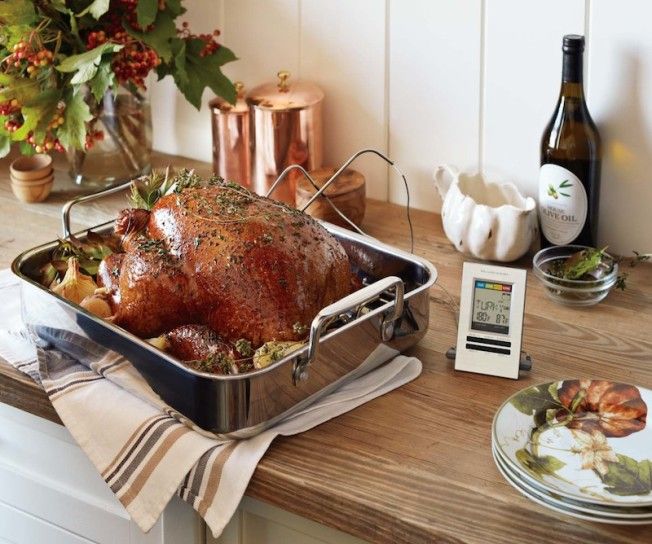Whether it’s your first time making a Thanksgiving turkey or your fifth, I’ve found that there’s always room for a little (or a lot!) of help. So, this year, I’ve put together a step-by-step Thankgiving turkey tutorial. Hope it helps.
Pick a recipe
My first bit of advice is to find an appealing recipe from a reliable source that you can really make (I suggest the Thanksgiving cookbook by Sam Sifton or just grab his Herb Roasted Turkey recipe, above, from Bon Appetit). Be honest with yourselves, mamas: Thanksgiving is not the time to take on a challenge, especially when a simple roast turkey can be so perfectly satisfying. And a good recipe will guide you more specifically if you do want to brine your turkey, spice things up, or otherwise riff on the classic approach.
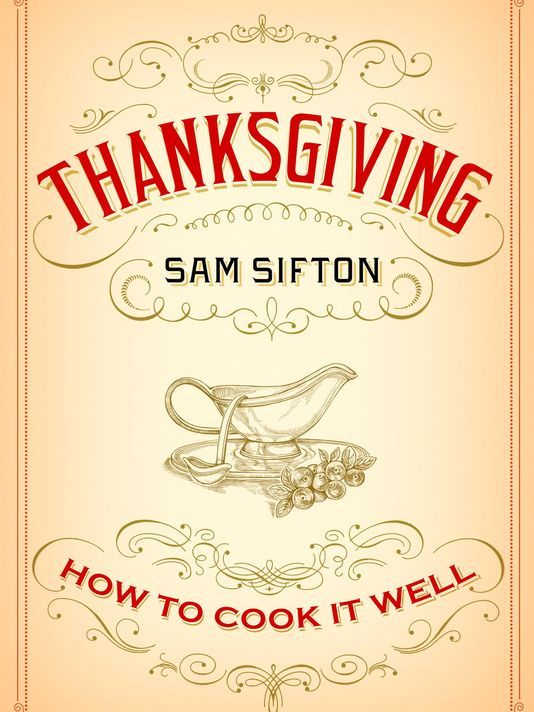
Choose a bird: How much turkey per person?
With a recipe in hand — or just the intention to simply roast your turkey — you’re ready to procure a bird. I suggest a fresh bird, but frozen works, too. Calculate 1.5 lbs of turkey per person. Smart tip: If the number comes out to fewer than 12 lbs total, round up the amount of turkey to 2 lbs per person, since smaller birds have less meat on their bones.
Thaw your turkey. In advance!
If you’ve chosen a frozen turkey, you’ll need to thaw it first and the best way to do that is slowly, so plan ahead. Never, ever thaw your turkey by just leaving it on the counter. Instead, the simplest method is to place your packaged turkey, breast side up, on a platter in the refrigerator. Set at 40 degrees, the turkey will thaw at a rate of approximately 4 lbs/day. Remember, with a 12-pounder we’re talking 3 days here, so that means starting Monday.
Don’t worry, you can thaw your turkey more quickly by using a cold-water bath. I provide instructions on how to defrost your turkey this way on my site One Hungry Mama. Plan on a defrost rate of 2 lbs an hour, which is a lot faster.
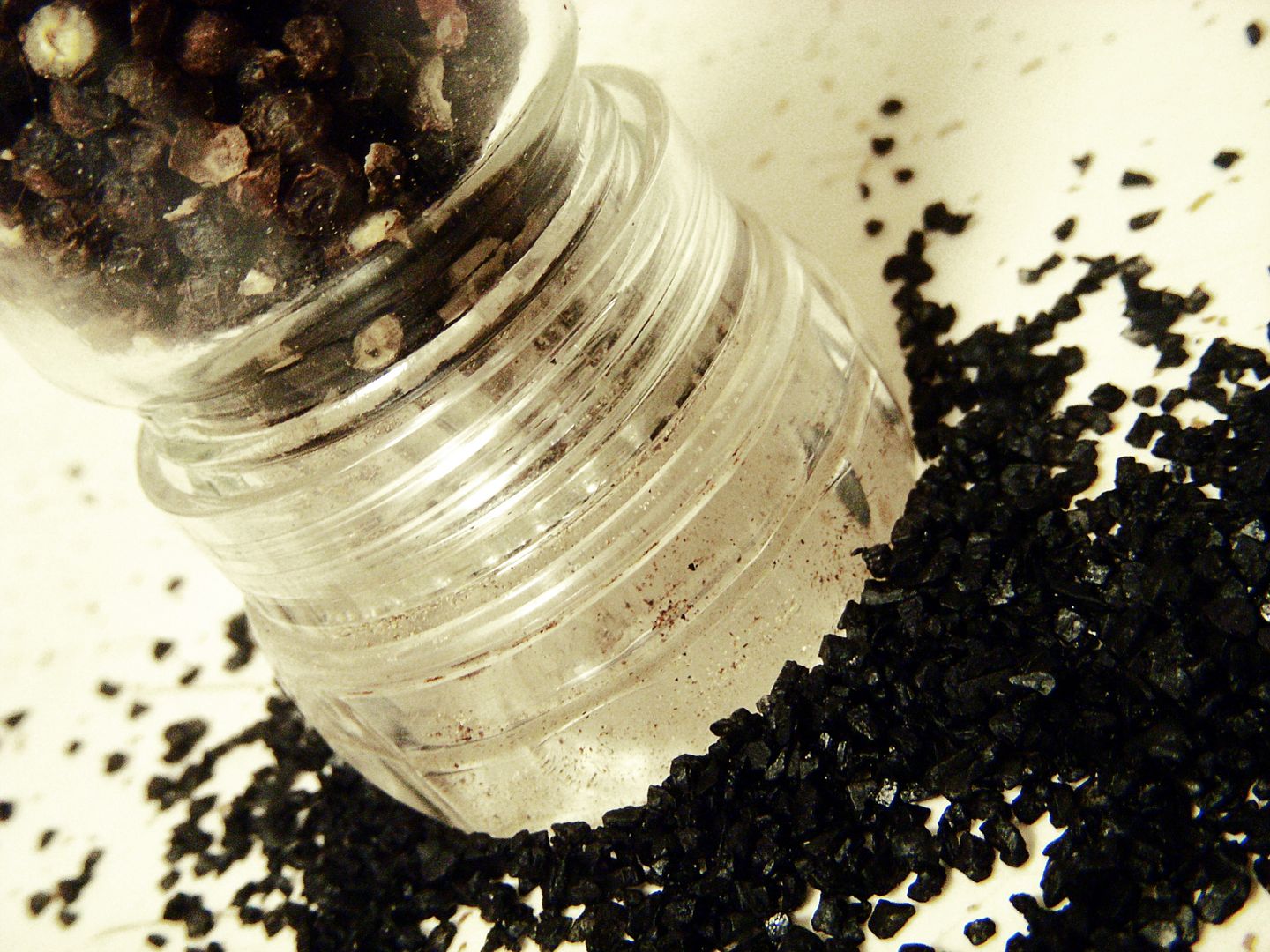 [image: brandi66]
[image: brandi66]
Season and stuff the bird
If you’ve chosen a specific recipe, you should defer to it at this point. For a simple roast turkey, though, you really only need salt, pepper, and butter. Start by making sure that the giblets and neck have been removed from the turkey cavity. Then rinse the bird and dry well — inside and out — using paper towels.
Rub both the outside of your turkey and the inside of the cavity with salt and pepper. Three tablespoons of salt and half as much of pepper should cover a 12- to 18-lb turkey. Place the turkey in a roasting pan fitted with a rack, breast side up.
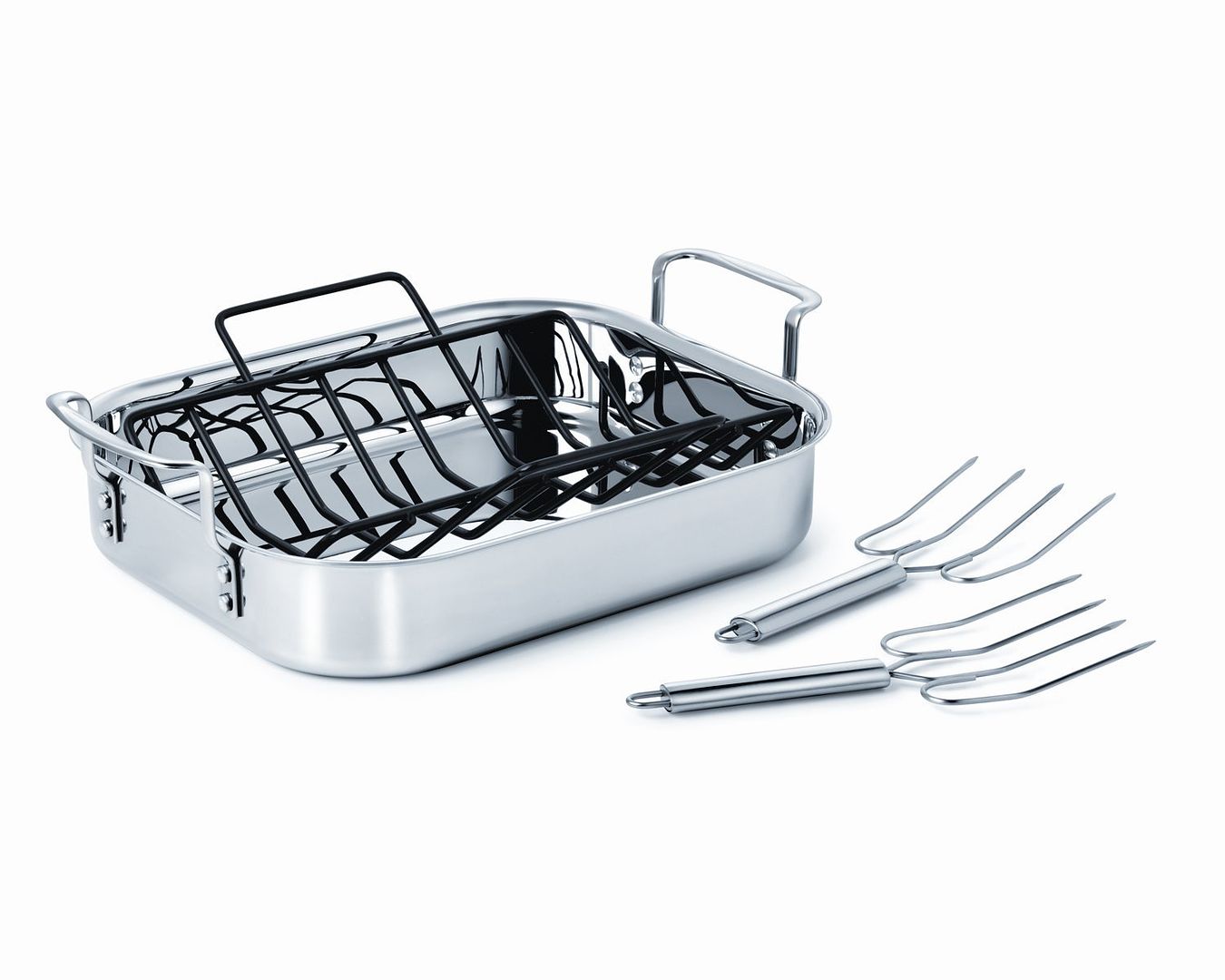
The turkey should fit snugly, with some, but not much, room all around. The pan should be stainless steel, like this Calphalon 14″ Roaster (above) available through our Amazon affiliate.
Oh, and, yes, a rack is necessary. Do not skip it.
Once in place, rub the top of the bird and also the inside of the cavity with softened butter, about 3 tablespoons of butter on the outside and another 3 on the inside of a 12- to 18-lb turkey. I prefer to cook stuffing separate from the bird and, instead, recommend filling the cavity with aromatic vegetables, fruit and/or herbs, especially if you’re new to cooking turkeys. (Filling the bird with stuffing can mess with even cooking and your cook time.) Onions and celery are a must, but you can also add carrots, apples, sprigs of thyme, or whatever else suits your fancy. Then tuck the tip of the wings under the bird to keep them in tight, and pour a cup of water or stock (turkey or chicken), into the bottom of the pan.
Time to roast
You probably know that there are a million ways to cook a turkey, from grilling to frying, but did you know that there are also a million ways to roast a turkey? Breast side up, breast side down. Starting at a high temperature, cooking it low and slow. Options, options, options. Again, defer to your recipe or stick with this traditional approach:
Begin roasting the bird at 425 degrees, uncovered, for 30 minutes. Baste with pan drippings, then turn the heat down to 325 for the remaining cook time. At this point, calculate 15 minutes for every pound and be sure to baste every 30 minutes.
While you can figure out your approximate cook time based on turkey size (see below), do not solely rely on this calculation. You want to test for doneness using a thermometer, and not the plastic pop-up one that came with your turkey. If you don’t have a meat thermometer, buy one. A simple dial works or, if you’re feeling fancy, grab a digital thermometer like this one from Williams-Sonoma.
Turkey cooking time rule of thumb
12- to 16-lbs: 4-5 hours
16- to 20-lbs: 5-6 hours
20- to 26-lbs: 6+ hours
To test for doneness, stick the thermometer into the thickest part of the thigh, where it meets the drumstick. Do not let the thermometer touch the bone, or your reading will be off. The rule of thumb is that the thigh meat should register 165 degrees. The juices should also run clear when you pull the thermometer out.
If at any point during roasting your turkey starts to get too brown, tent it with aluminum foil. Keep the foil relatively loose for the duration of your cook time, and continue to baste the turkey every 30 minutes.
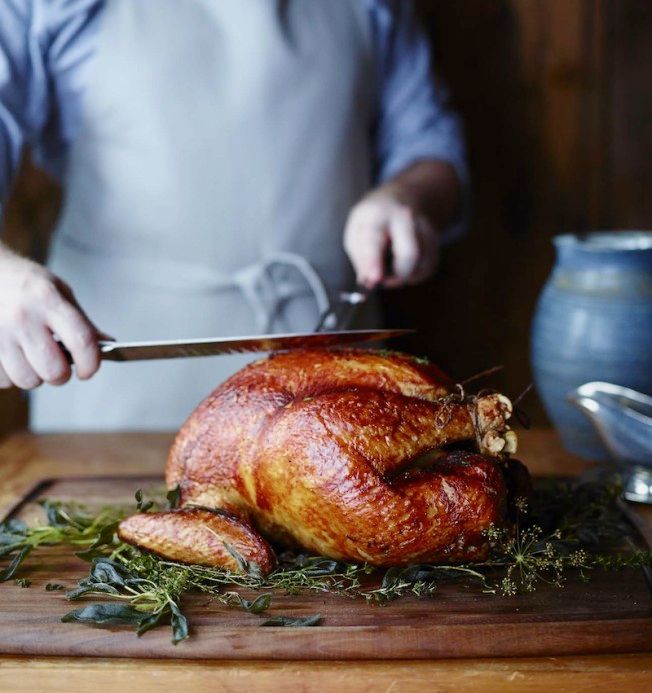
Allow the turkey to rest
When the turkey is done, remove it from the oven, cover the pan in foil, and allow the bird to rest for 30 minutes. Then grab someone else to carve the turkey while you sip on one of these festive holiday cocktails. If your carver needs them, find tips on carving a turkey over at Taste, the Williams-Sonoma blog.

Pack up the leftovers
No matter how delicious your turkey, you’re likely to have leftovers which your guest can pack up in this adorable turkey leftovers kit with free printables. I love this!

